

 |
Search the Site with

|
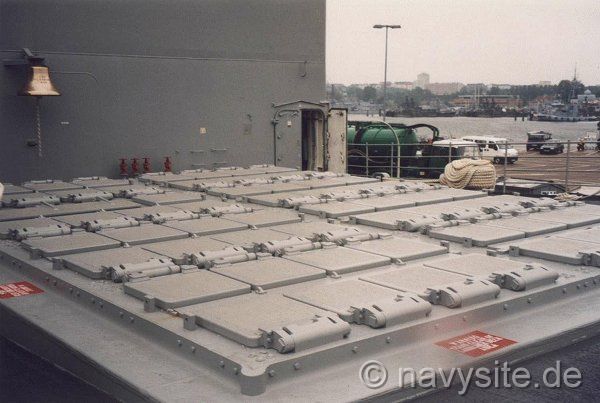
Description:
The MK 41 Vertical Launching System (VLS) is the worldwide standard in shipborne missile launching systems. Under the guidance of the US Navy, Martin Marietta performs the design, development, production, and field support that make the battle-proven VLS the most advanced shipborne missile launching system in the world. The Mk 41 VLS simultaneously supports multiple warfighting capabilities, including antiair warfare, antisubmarine warfare, ship self-defense, strike warfare, and antisurface warfare.
Features:
MK 41 is a fixed, vertical, multi-missile storage and firing system that lets Navy vessels launch significant firepower. The capability of VLS to simultaneously prepare one missile in each half of a launcher module allows for fast reaction to multiple threats with concentrated, continuous firepower. The US Navy currently deploys MK 41 VLS - on
The Vertical Launching System (VLS) Mk 41 is a canister launching system which provides a rapid-fire launch capability against hostile threats. The missile launcher consists of a single eight-cell missile module, capable of launching SEASPARROW missiles used against hostile aircraft, missiles and surface units. Primary units of the VLS are two Launch Control Units, one 8-Cell Module, one 8-Cell System Module, a Remote Launch Enable Panel and a Status Panel.
The Launch Control Units receive launch orders from the Multi-Function Computer Plant (MFCP). In response to the orders, the Launch Control Units select and issue prelaunch and launch commands to the selected missile in the VLS launcher. During normal VLS operations, each Launch Control Unit controls half of the Launch Sequencers in the launcher. Either Launch Control Unit can be ordered by the MFCP where one Launch Control Unit is offline and the other Launch Control Unit assumes control of all Launch Sequencers in the launcher.
The 8-Cell Module consists of an upright structure that provides vertical storage space for eight missile canisters. A deck and hatch assembly at the top of the module protects the missile canisters during storage and the hatches open to permit missile launches. The plenum and uptake structure capture and vent missile exhaust gases vertically up through the module to the atmosphere through the uptake hatch. Electronic equipment mounted on the 8-Cell Module monitors the stored missile canisters and the module components and assists in launching the missiles.
The 8-Cell System Module is like an 8-Cell Module with addition of the 60 Hz and 400 Hz Power Distribution Panels; the Damage Control Junction Box; the System Lighting, Power Receptacle, and Telephone Junction Box; and the System Transformer Platform that serve the entire launcher. The 8-Cell System Module receives and distributes power and control signals from outside the launcher to all the modules and collects control and damage control signals from the modules and sends them outside the launcher.
The Status Panel receives module status and launcher hazard signals from the monitoring assemblies within the launcher. Status and hazard conditions are displayed on the Status Panel. The Status Panel also sends launcher hazard and module status signals to the ship Central Control Station. The Status Panel receives enable signals from the Remote Launch Enable Panel that enables launcher power and the launch enable function within the launcher if the Status Panel is in remote operation.
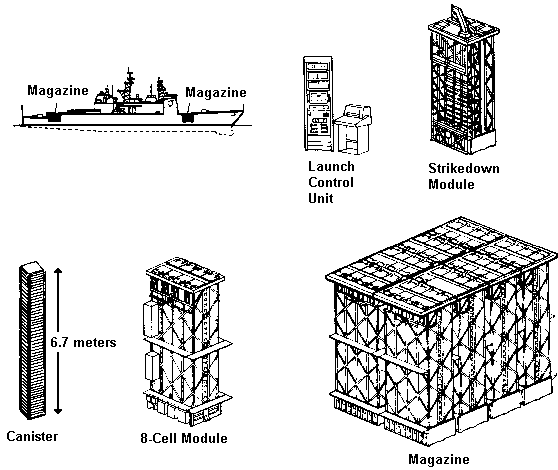
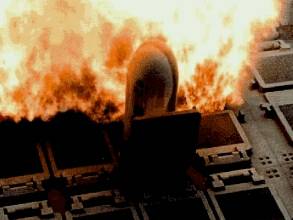
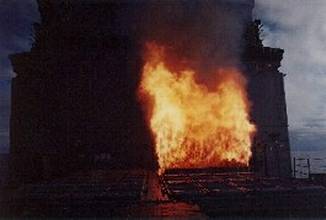
VLS Image Gallery:
 | 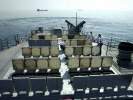 |  |  |  |
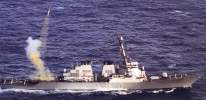 |  | 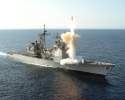 | 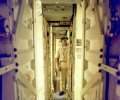 | |